
The Serengeti's migration extravaganza

![]()
They came thundering from all sides, driven by a primordial instinct and sucked in by the cacophony and energy of those already crossing, plunging into the Mara River separating the Serengeti from Maasai Mara. Seemingly without a care, they chanced their luck against the current, the rocks and the crocs. Chaotic, pulsating, exhilarating…
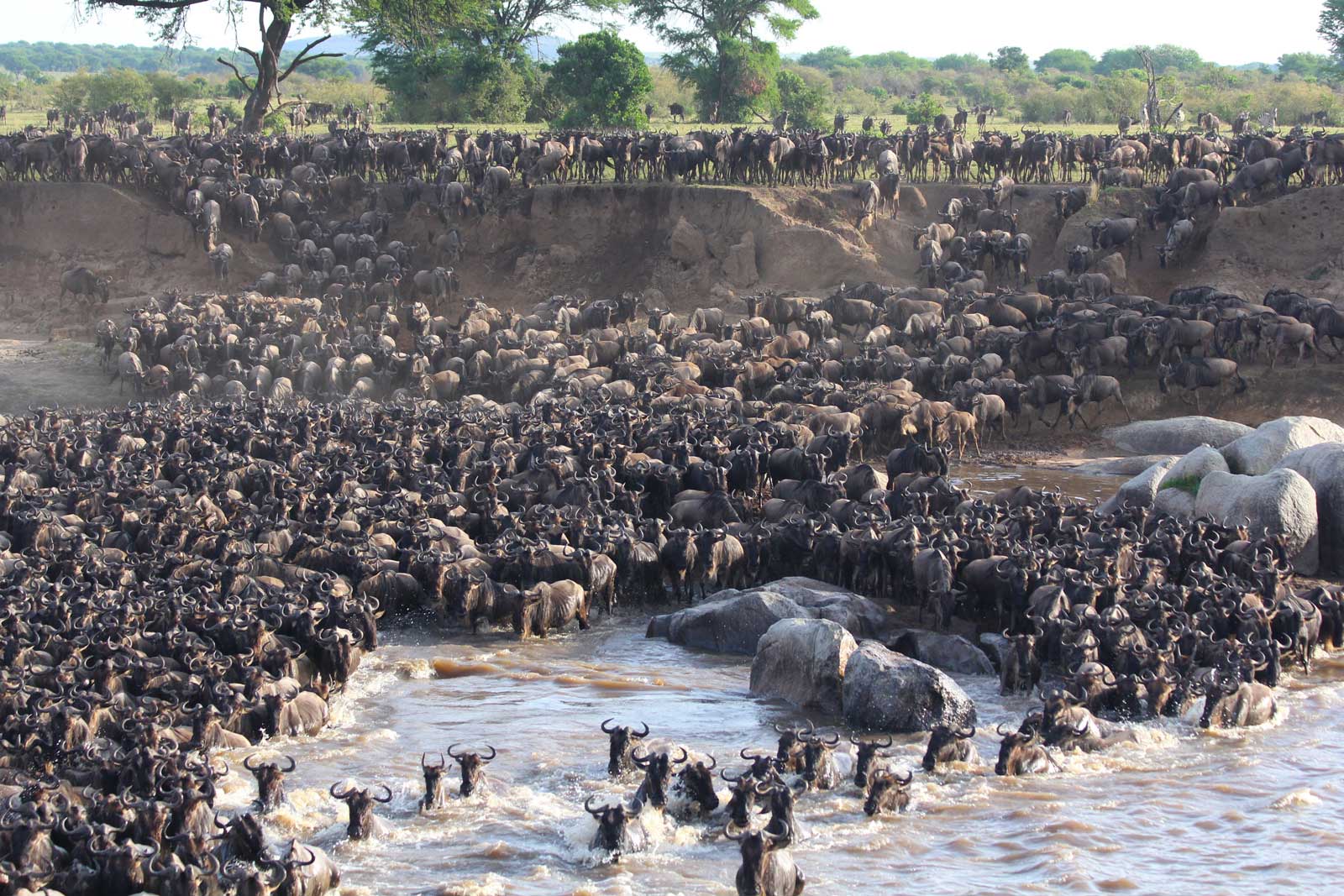
The day started like any other on my Serengeti safari – early. The mocking chats and freckled nightjars were stridently leading the dawn chorus as my guide Frank and I chugged out of camp. Most guests were still sleeping or enjoying a mug of coffee with scrambled eggs and flapjacks. Little did we know that this would be no ordinary day…
The previous day, we had enjoyed bucket list bliss as a 30-minute stream of thousands of wildebeest and zebra crossing the Mara River in front of us, with four going down to massive Nile crocodiles that seemed to lurk everywhere, biding their time and choosing their victims wisely. All four victims were young wildebeest that had strayed from the safety of thousands of churning hooves; their agonised cries drowned out by the cacophony.
Later that day, we found two black rhinos on the open plains, completing the Big 5 sightings within 24 hours of my arrival.
My special request for the day was to look for rufous-tailed weavers, northern Tanzania being the only place in the world where they are found. After hours of searching, we found a flock of six weavers working the short grass for insects and seeds a few metres away from the bush track. This is a robust weaver, with piercing bright blue eyes – a ‘lifer’ for me.
We also got caught in a sudden thunderstorm and took shelter in a copse of thorn trees. After the refreshing downpour, we hit the tracks again, Earth’s pheromones infusing us with a sense of her fecundity and of exuberant celebration. Flying ants were emerging, much to the delight of a pair of feasting bat-eared foxes, and countless mongooses, hornbills and toads that gobbled up this rich protein bonus. A good day indeed!

And so, today we planned to trundle around and enjoy whatever Africa delivered. We had packed breakfast and lunch – this was to be a long, exploratory day out. Our route took us through the nearby rocky kopjes, in search of the leopard and her large male cub we had watched the day before harassing a pair of ostriches, while several oribi whistled their angst at the presence of the spotted ones.
After an hour or so of bumbling around, we crested a rise and gazed down towards the Kenyan side of the Mara, to see if any wildebeest were gathering. Indeed, they were.
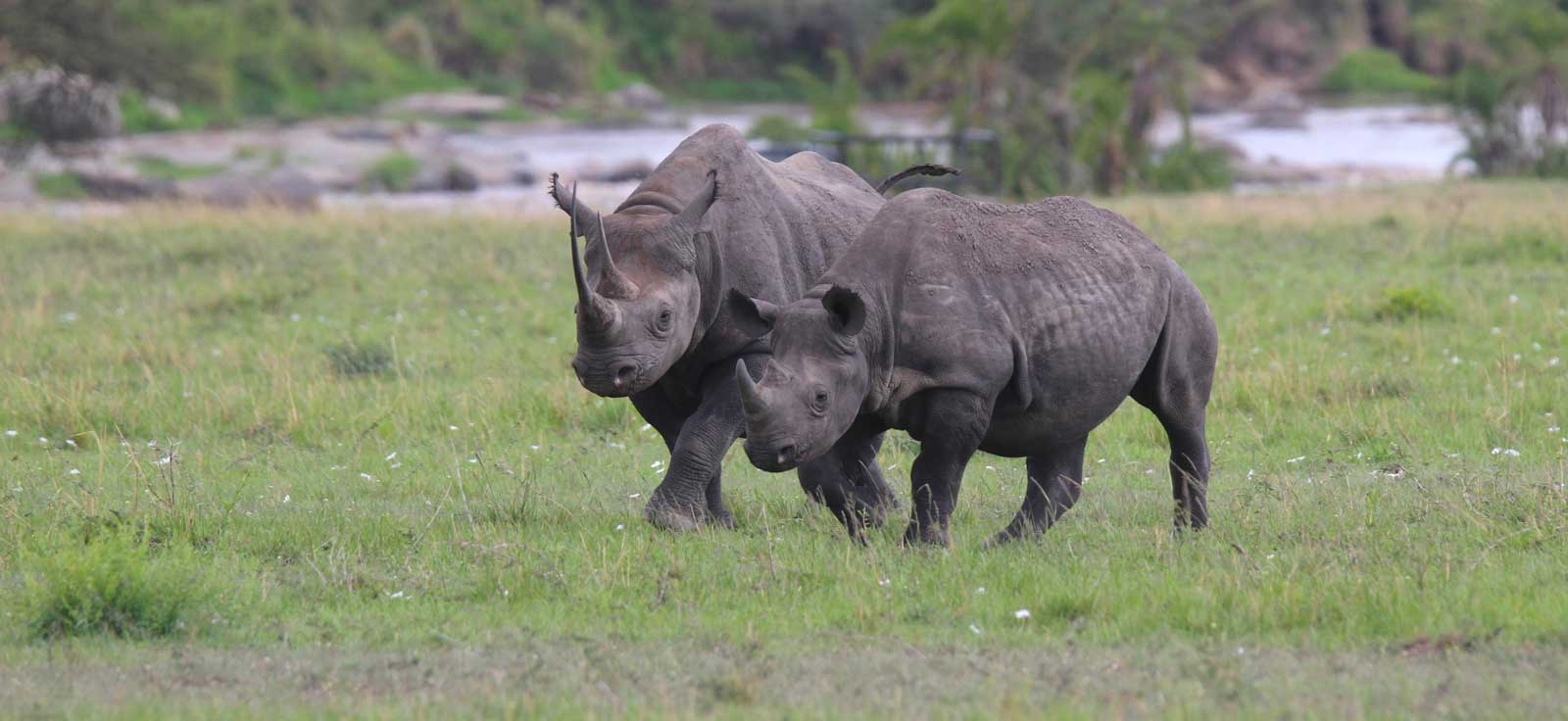
The riverbank and beyond was black with wildebeest – with a few bunches of zebras breaking the black background.
By some stroke of luck, the first of the wildebeest hit the water the exact second we parked on an elevated peninsula directly opposite. What followed blew my mind. A thick column of wildebeest some 30-across forded the river directly towards us. Initially, they aimed for a narrow gully to our right, but then the leaders stopped in their tracks, suddenly unsure of that route. By now hundreds were pouring into the river from several places on the opposite bank, and the bottleneck in the water ballooned before the decision was made to veer to our left and stream up a narrow gully a few metres from us.
Chaos reigned, as some animals were trampled in the panic to clamber up the gully to our left – often with three or four animals barging into a space fit for one. By now wildebeest and zebras were bursting out of the woodland from all sides on the opposite bank and galloping towards the crossing point, crashing down into the water, splitting as they reached us, and climbing up the bank on both sides of us! (Note that our vehicle was on a high peninsula and not obstructing the path of the herd in any way.)
The noise was deafening and the energy levels high – overpowering in fact. It was about 20 minutes later, with many tens of thousands having crossed, when someone called full-time, and those remaining on the opposite bank pulled back to regroup for the next attempt. In less time, this crossing saw several times the number of animals than yesterday’s crossing.
Amongst the chaos two more crocs hit paydirt, dragging their bellowing victims below the swirling waters before sealing the kill with violent death rolls.

Watch a video of the wildebeests and zebras crossing the Mara River, filmed by Simon Espley and Frank Gabriel, below
Zebras seemed slightly more organised, more alert to danger, pickier about when and where to cross. One group chose to cross a few metres upstream from the tightly-packed thrashing wildebeest horde, creating a bow wave to push along a tiny foal with wide eyes. The tiny rocking horse scrambled and surfed to shore, shook himself off a few metres from us and staggered off to follow his herd.
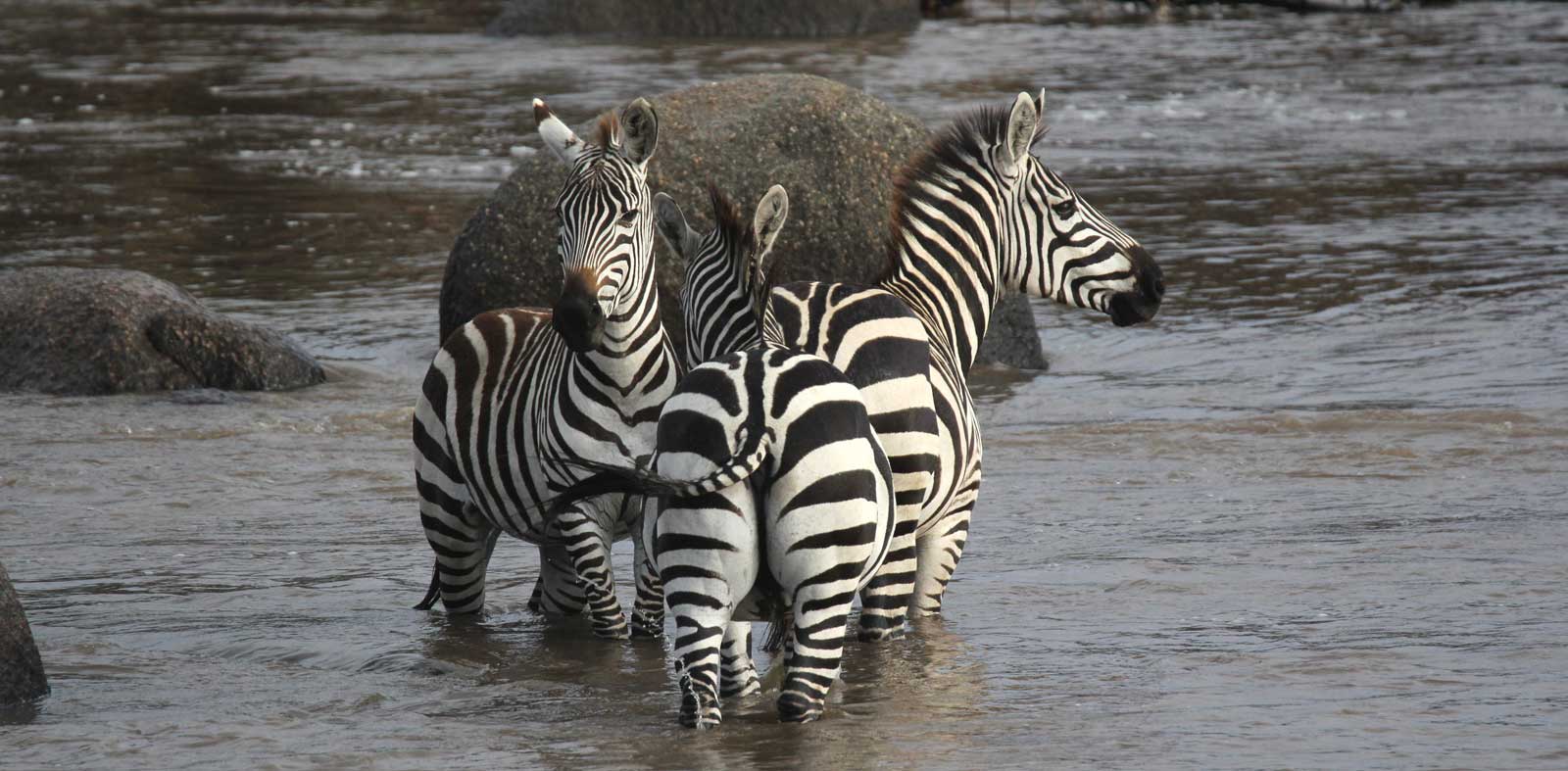
Emotionally exhausted and with sore eyes, we retreated from the mayhem and found a quiet spot for some succour and reflection. And breakfast. Nothing like a delicious bush breakfast in the cool shade of a balanites tree, with the savannah vista stretching out below us.

These crossings were right up there with my most extraordinary wildlife encounters on this vast continent I am lucky enough to call home. These natural phenomena cast a spell on me, reminding me that we are all just minor actors in the theatre of life. All of us. That throng of wildebeest reminded me of crowds waiting to cross a busy city street or board the underground train, packed tightly and subject to that group energy, that sense of going with the flow.
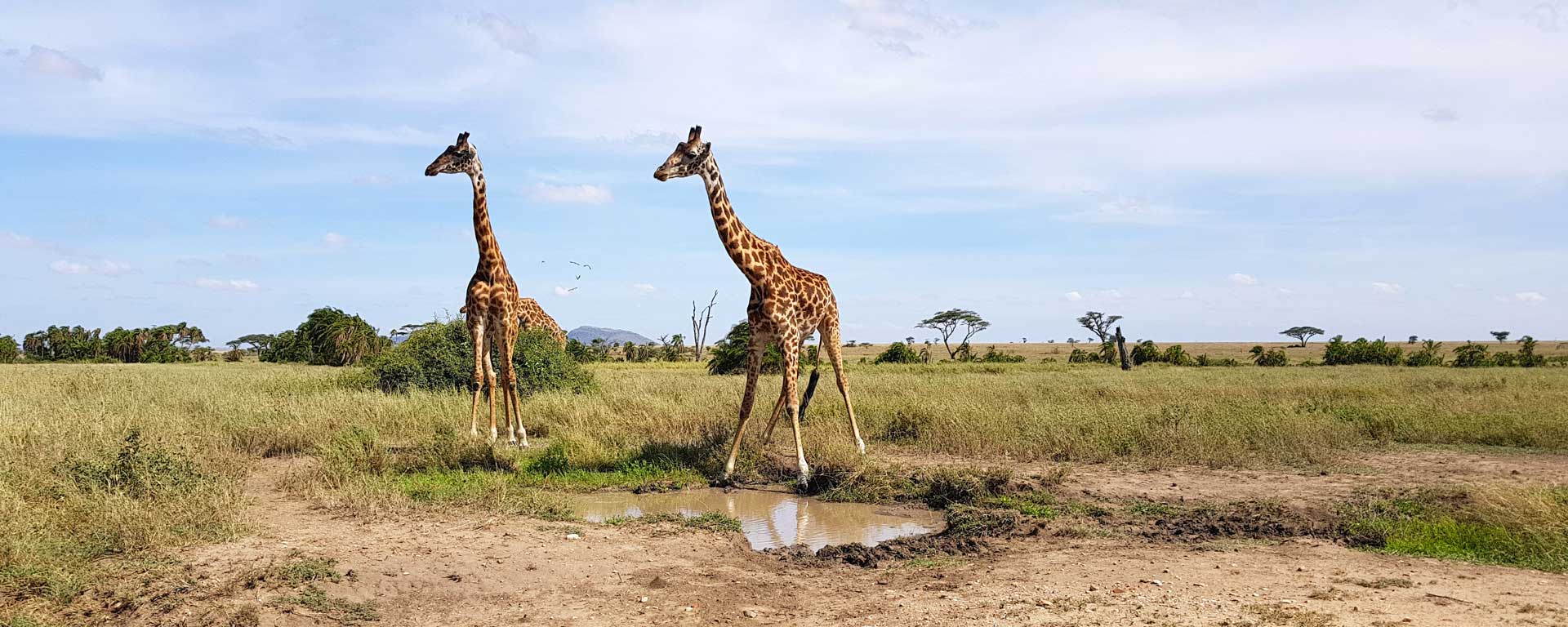
After a few days of river crossings in northern Serengeti, I caught a short flight to the central plains of the Seronera area. From the air, I saw lines of wildebeest plodding south, towards these plains, in anticipation of the coming rains. But the central plains were still dry during my brief stay – the short grass corn-yellow, and swirling dust devils betraying the bone-dry soil.

In my three days here I saw nary a wildebeest, although zebras were scattered here and there, scavenging on patches of burnt ground with mere millimetres of green grass, perhaps sprouted in anticipation of the coming rains. There were Thomson’s and Grant’s gazelle everywhere, often in large gatherings. And lions. We stopped counting lions after a while, so many were there. We also found a few leopards and cheetahs, but lion encounters defined this part of my safari.
The big cats were hanging in at the peak of the dry season, waiting for the rains and the herds to arrive. Ribs were showing on tawny muscular bodies, and the sense of anticipation was palpable. Pity the first arrivals from the north…
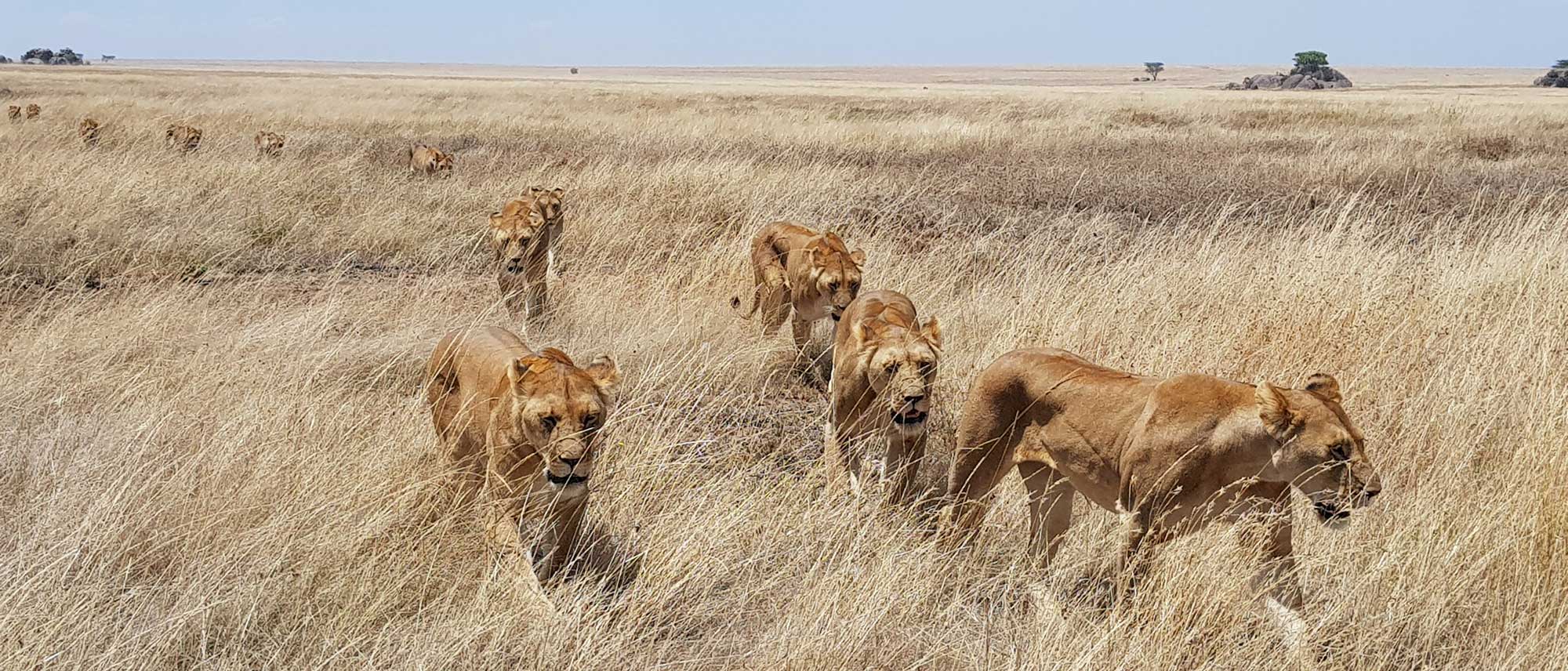
MIGRATION INFORMATION
CROSSINGS
The Great Wildebeest Migration is a never-ending pursuit of nutritious grazing by the two million-strong wildebeest and zebra herds of the Mara-Serengeti ecosystem. In the northern-most months of this roughly circular annual journey, the herds have to cross firstly the Grumeti River and then the Mara River en-route north and again on the return journey south. Often various herds wander back and forth across the rivers, as they seek out the best grazing.
The Mara River usually offers the most dramatic crossings, because it is wider and deeper than the Grumeti. There are also a few places, such as the Sand River, where the herds can cross without getting their feet wet. This crossing process ebbs and flows every season, and timing is entirely dependent on the rains. These crossings are the most popular tourism aspect of the Great Wildebeest Migration, and the most popular northern hemisphere holiday month of August is prime time, although crossings can be viewed at any time from June to November.
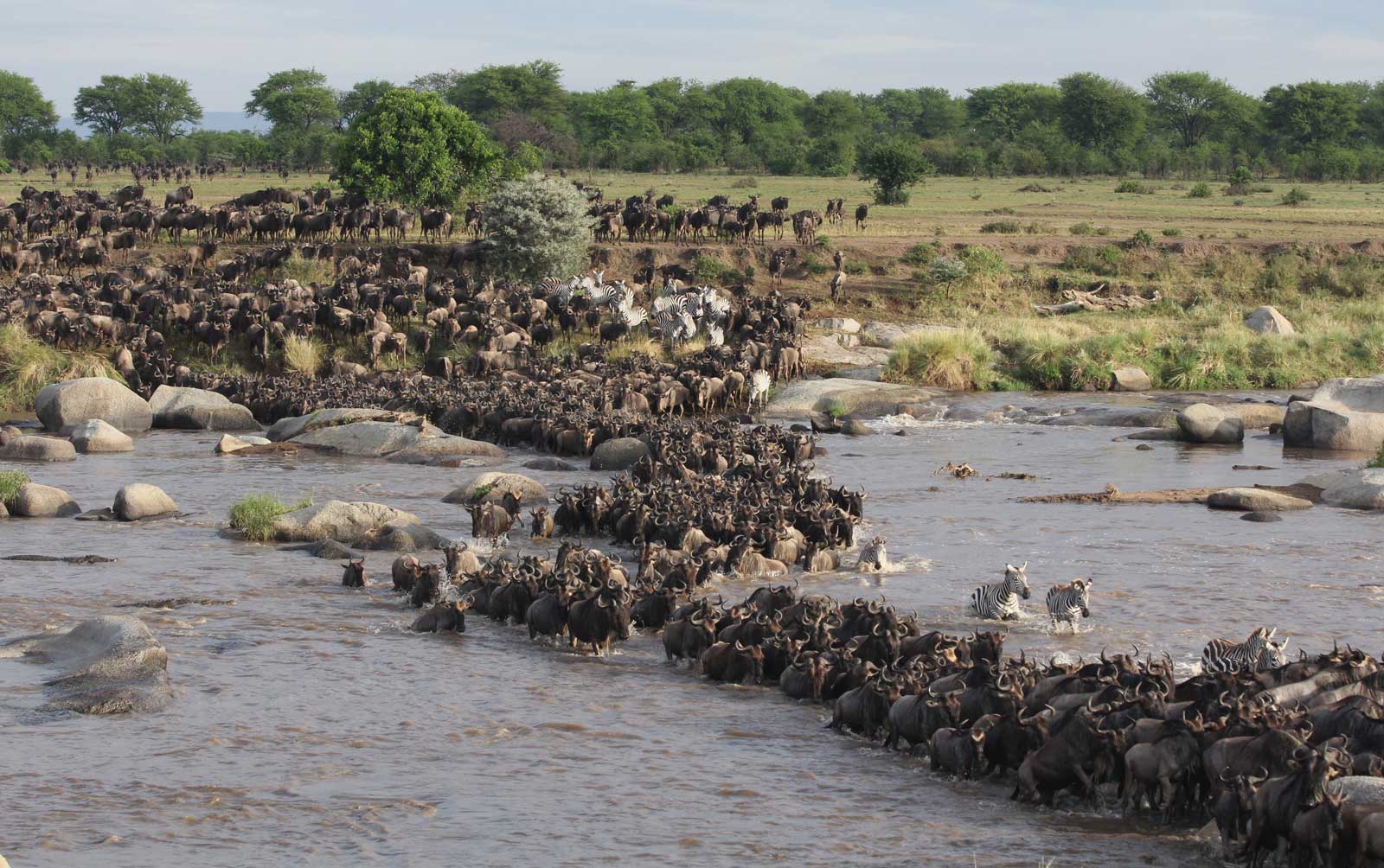
SERENGETI
Serengeti National Park, in northern Tanzania, comprises almost 15,000 km² of predominantly rolling grasslands, savannah, riverine forest and woodlands.
This vast landscape forms part of the unfenced Mara-Serengeti ecosystem that spans Kenya and Tanzania. It plays host to the Great Wildebeest Migration, also offering regular sightings of the Big 5 (lion, leopard, elephant, buffalo and rhino) as well as zebras, crocodiles, hippos, giraffes, various antelope species and good populations of cheetahs, hyenas and wild dogs, and smaller species such as serval and bat-eared fox.
The name Serengeti is derived from the Maa word ‘siringet’, which refers to a “place where the land runs forever”.

WHERE TO STAY
For camps & lodges at the best prices and our famous ready-made safari packages, log into our app. If you do not yet have our app see the instructions below this story.
Simon was hosted at Lemala’s camps, lodges and villas in Tanzania: Lemala Kuria Hills Lodge, Lemala Ewanjan Tented Camp, and Lemala Kili Villas.
LEMALA KURIA HILLS LODGE
Lemala Kuria Hills Lodge is perched amongst massive boulders on a rocky kopje in the Wogakurya Hills of northern Serengeti National Park in Tanzania, a short game drive from the Mara River and the Kogatende airstrip. Each of the 15 glass-fronted guest tents has been discretely positioned amongst the boulders to ensure privacy and spectacular views, and the main lodge area enjoys sweeping views from the bar, wooden deck and swimming pool areas.

Simon’s highlights
“I enjoyed that Kuria Hills is perched on a rocky kopje, looking down over the plains. The camp area is alive with birds, and I enjoyed pairing my late afternoon high tea with watching the white-headed and spot-flanked barbets compete with brown parrots and Fischer’s lovebirds for ripe figs in the huge fig tree hanging over the wooden deck of the main area. Watch out for the large cranky male buffaloes that hang out amongst the guest units, and always call for an askari to escort you from your room to the main area. There is an awesome sundowner spot on the rocks immediately next to the lodge.”

LEMALA EWANJAN TENTED CAMP
Lemala Ewanjan Tented Camp is an authentic tented camp, with a decidedly colonial explorer feel to it. The camp is positioned in a quiet valley, near to the vast central plains of Seronera in the Serengeti National Park, but away from the busy main game drive routes. The 12-tented camp is positioned to provide access to the Great Wildebeest Migration from November to January as the herd heads south from the Mara River to the Ndutu Plains further south, and again during April to June as the herds head north again. The Seronera area enjoys year-round wildlife viewing and has a large population of resident big cats.
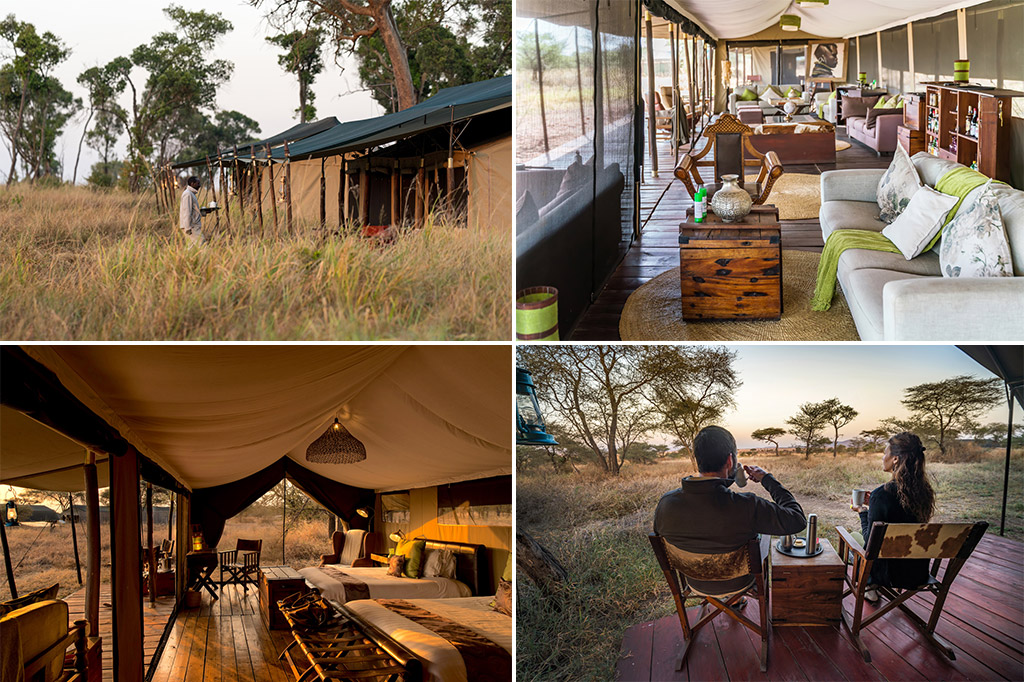
Simon’s highlights
“I enjoyed the large tents, with their creaky wooden floorboards and colonial-era furnishing. This camp made me feel like an explorer, an adventurer. Freshly-brewed early morning coffee on my private verandah was a camp highlight, looking out over the savannah packed with zebras and Thomson’s and Grant’s gazelles, and watching the stunning white-headed buffalo weavers and D’Arnaud’s barbets work the camp area for scraps. Sundowner drinks at the fire were always memorable, complete with awesome conversations and of course, yet another amazing sunset.”

LEMALA KILI VILLAS
The four Lemala Kili Villas are located on a private wildlife and golf estate on the outskirts of Arusha in Tanzania. These villas offer the ideal overnight stay before or after your safari, being a short drive from both Arusha and Kilimanjaro Airports. Each of the four villas is self-contained, with its own team – ideal for small groups and families.

Simon’s highlights
“I enjoyed the laid-back, homely feel about my villa. The villa is large, and has a rambling feel about it, without losing personality. I arrived after a long day of travelling between camps in the Serengeti and immediately relaxed into the rhythm of the place. A short walk along the golf course produced some excellent last-minute birding bonanzas and dinner on the verandah was the perfect end to my Serengeti safari.”

Have a look at our handcrafted MIGRATION SAFARIS:
• Serengeti Great Migration Safari (5 days or more)
• Maasai Mara Migration Season Safari (7 days)
ABOUT THE AUTHOR, SIMON ESPLEY
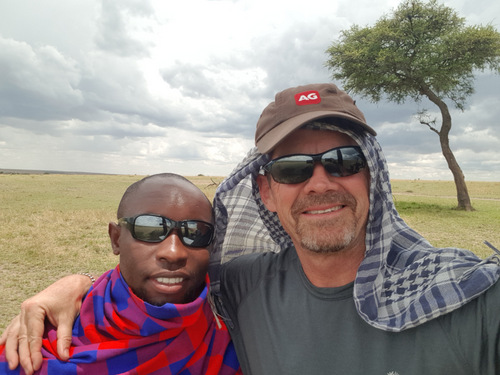 Image caption: Simon with photographer Frank Gabriel
Image caption: Simon with photographer Frank Gabriel
Simon Espley is an African of the digital tribe, a chartered accountant and CEO of Africa Geographic. His travels in Africa are in search of wilderness, real people with interesting stories and elusive birds. He lives in Hoedspruit with his wife Lizz and two Jack Russells, and when not travelling or working, he will be on his mountain bike somewhere out there. His motto is ‘Live for now, have fun, be good, tread lightly and respect others. And embrace change.’
To comment on this story: Login (or sign up) to our app here - it's a troll-free safe place 🙂.![]()






